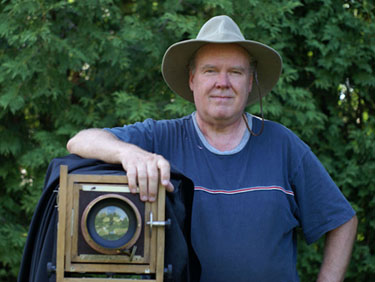About Me
Camera History
I have always been interested in photography. My first camera was a plastic Kodak Starmite, with a plastic lens, and a built-in flash holder for the tiny AG-1 bulbs. A neighbor loaned me his Twin Lens Reflex, a Ricoh Diacord. Built in the 1950s, it was a big step up from the Starmite and my first adjustable camera. Similar to a Rolleiflex TLR. It took 2 ¼ inch square negatives, and had an excellent lens. It also had a great focusing mechanism, using thumb levers, instead of a focus knob on the side, better than all the other TLRs I've used. I still have this camera, several decades later.
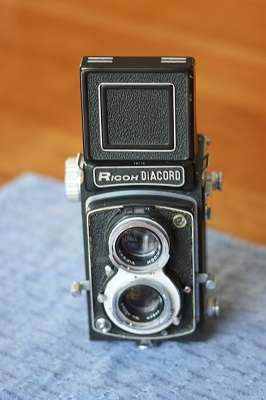
My first 35mm was the ever desirable single lens reflex. A Miranda D, no light meter, but the lens was great. However, the shutter would occasionally jam, and I finally tossed it. Next was a big move up to a Nikon F2. Built in light meter, which soon developed problems, two fixes under warranty were not enough. It was also heavy to carry around. I took a chance and bought a Nikkormat EL. This was so I didn't have to buy new lenses. The Nikkormat turned out to be the best camera ever. It had a great meter with auto-exposure. I shot hundreds of rolls through this. Still have this camera too.
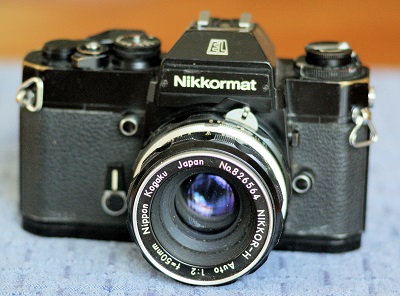
The next move was to auto-focus, and the Nikons were too pricey, so I went with Minolta Maxxums, and was very impressed with the cameras and lenses.
My first Digital camera was a Nikon Coolpix, 10 megapixels and I still use this almost 10 years later.
For Digital DSLRs, I went with Sony because they used all my old Minolta Maxxum lenses. Despite almost everyone else I know using Nikon and Canon, I've been very pleased. My biggest gripe going digital is the cost. Gone are the days when a decent film camera with a good lens was sufficient. Photos improved with advances in film technology. Now, digital camera prices and lenses are outrageous, and to get finer quality pics, generally requires a new camera. Sometimes I think it might be better to go back to film and scan the negatives into digital.
Going Backwards
Back in the film days, I did some darkroom work, but never to a great extent, mostly because of moving around. I did some large format (4x5 inch) with a speed graphic. It was fun to use film holders, set shutter speed by a chart, focus using a rangefinder and then compose in a viewer. It amazed me how news photographers back in the day captured so many great images with these heavyweights.
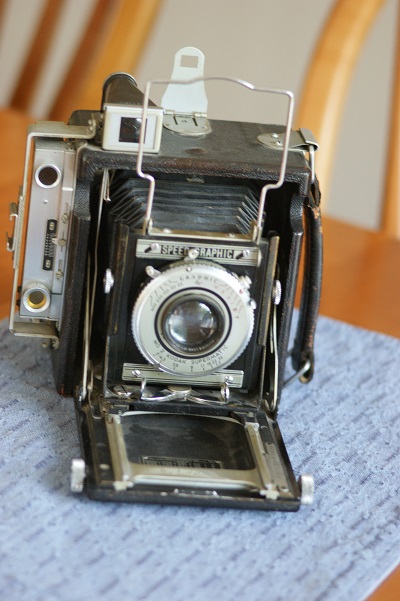
I have collected cameras over the years. I enjoy shooting with a Speed Graphic, Minox spy camera, Kodak Stereo, or a 1930s Leica. My favorite old cameras are the Baby Speed Graphic, or the SLR Graflex. Although I have the 4x5 inch versions of these cameras, I like use the smaller 120 film size versions, since the film is easier to use and process. I can also scan the smaller film into digital.
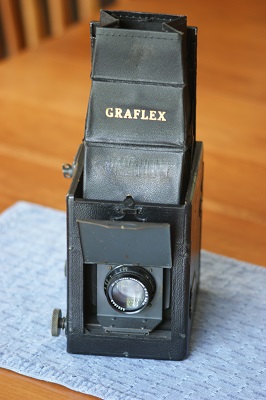
I was also interested in the history of photography, and on a trip to western New York, I visited the George Eastman Museum in Rochester, NY. The museum had a large exhibit of Daguerreotypes, from Southworth and Hawes. I had picked up a few Dags over the years and found them fascinating. Later I started researching historical processes, and found that it wasn't easy to get started making Daguerreotypes. But, I also got interested in the tintype, and there were a few workshops to learn the process. I chose John Coffer, and took his class in June, 2010. I found it to be a great process, although I am still working at it, and of course, I had to buy some more equipment. I had a couple of 4x5 cameras, but have since moved up to 5x7 and 8x10 cameras. I have since returned to John's Farm every summer for a gathering with former students. I've always enjoyed these Jamborees, and also met a great bunch of people, including two Professors from the New Hampshire Institute of Art.
I won't go into the process details, there is a lot of information on line, but it can be done with a simple box camera, up to very large view cameras. It is a very involved, time consuming process, but it gives an appreciation for what Alexander Gardner, Timothy O'Sullivan, and Henry Jackson went through.

